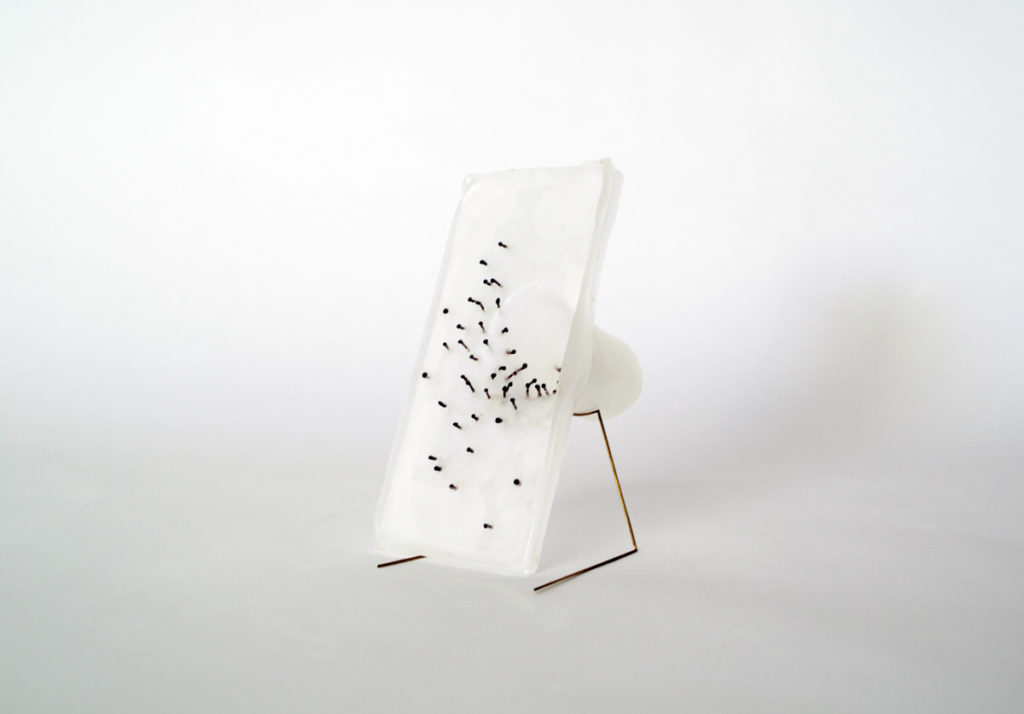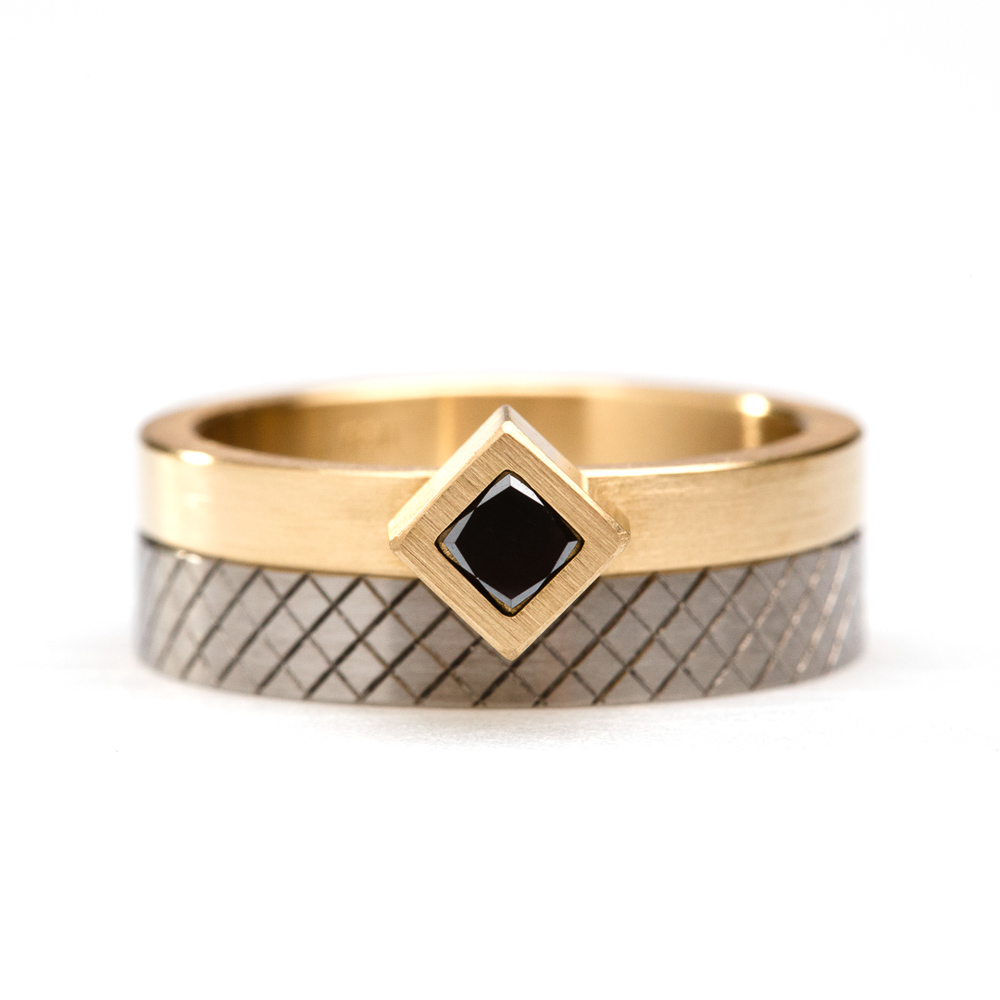- Mel Douglas, Bind and Tether (detail), 2018, 40x40x40cm, blown, cold worked and engraved glass. Photo courtesy of the artist
- Nyx Matthews, Inwards momentum, 2018, paraffin wax, steel, brass.photo courtesy of the artist
- Kenny Son & Hendrik Forster, Teapot no.4, photo Youmee Jeon
- Phoebe Porter, Multifaceted rings 2018. Stainless steel, titanium, 925 silver, 750 yellow gold, black and white diamonds, photo Andrew Sikorski
Adrienne Erickson reflects on the design processes revealed in a series of exhibitions at Craft ACT for the Design Canberra Festival.
The process of ideation, experimentation and making has been revealed in the current group exhibition at Craft ACT to show the diversity of paths taken by quite a varied group of designers to develop ideas and create their work. The exhibition allows us to peek through the looking glass into the designer’s process, to view the experimentation and intricate attention to detail, combining with remarkable skill in manipulating difficult materials, into the manifestation of a creative vision.
The creative process of the collaboration between Hendrik Forster, a leading silversmith and emerging designer and metalsmith Kenny Yong-soo Son has been extensively documented revealing a cross-cultural and intergenerational connection that originally developed over a shared meal of roast pork. The outcome has been titled The Teapot Project, reworking the ubiquitous teapot not just as a functional vessel, but an object that embodies the history, culture and traditions in a journey both artists were interested in exploring. The designers have used handcrafting and local manufacturing processes to create a collection of multi-faceted teapots that appear to speak a lot about cultural identity and connection of ideas.
Mechanical Sampling, the work of 2019 Design Canberra designer-in residence Phoebe Porter reveals a different process, a solo journey of experimentation with new and old materials combined with traditional and digital techniques to create very unique outcomes. The video shown with Porter’s work reveals the precision of machine-made marks with the finesse and attention to detail required to refine hard metal into elegant rings. The process harks back to creating jewellery as treasured objects and not disposable items, the marks of the jeweller staying with the wearer and changing over time. It’s a phenomenal ability to wield heavy machinery to produce something so precise and elegant, and Porter emphasises the word ‘restraint’ to describe her approach that results in a robust yet refined collection of work.
Artist-makers Kristina Neumann, Nyx Matthews and Thomas O’Hara have collaborated to “systematically” create Material Codes, an exhibition that is as much about exploration of materials and process, as it is about outcome. Self-determined instructions have driven the artists’ process. In O’Hara’s work, form is dictated by pattern; in Neumann’s, repetition and pre-ordained parameters control the outcome; while for Mathews, the final form is governed by a systematic investigation of materials. This is a great framework to expose the individuality of an artist’s work, despite a “code of conduct” and rigidity in approach. It is also a great demonstration of the design process in itself, that despite a common starting point, designers will arrive at entirely different destinations that is the representation of their personal vision and narrative.
An epic cross-cultural collaboration underpins the work of six Italian and six Australian glass designers, who have created worked inspired by the magnificent Murano glass chandelier installed by beloved Canberra architect Enrico Taglietti in the Italian Embassy in Canberra in 1967. Murano glass is synonymous with Italian glass design, and the work of Italian glass designers Zanellato Bortottom Matteo Zorzenoni, Federico Peri, Gala Fernandez, Valentina Cameranesi and Australians Liam Fleming, Mel Douglas, Tom Skeehan, Elizabeth Kelly, Peter Bowles, Jenni Kemarre Martiniello, creates a dialogue expressing the commonality and points of difference of the established world of Venetian glass and its influence on glassmakers in Australia. Enrico Taglietti is one of many architects and designers who emigrated to Australia and informed and influenced the cultural landscape in Canberra, which will continue to inspire emerging and even established designers and artists in the development of their work. Craft ACT has commissioned Annalisa Rosso and Francesco Mainardi, known as Mr. Lawrence, to curate this exciting and beautiful project as a signature exhibition to express the vision of the 2019 DESIGN Canberra festival theme of utopia.
These exhibitions were part of the Design Canberra Festival 2019.
Adrienne Erickson is Swayn Senior Fellow in Australian Design at the National Museum of AustraliaDesign Canberra Festival





